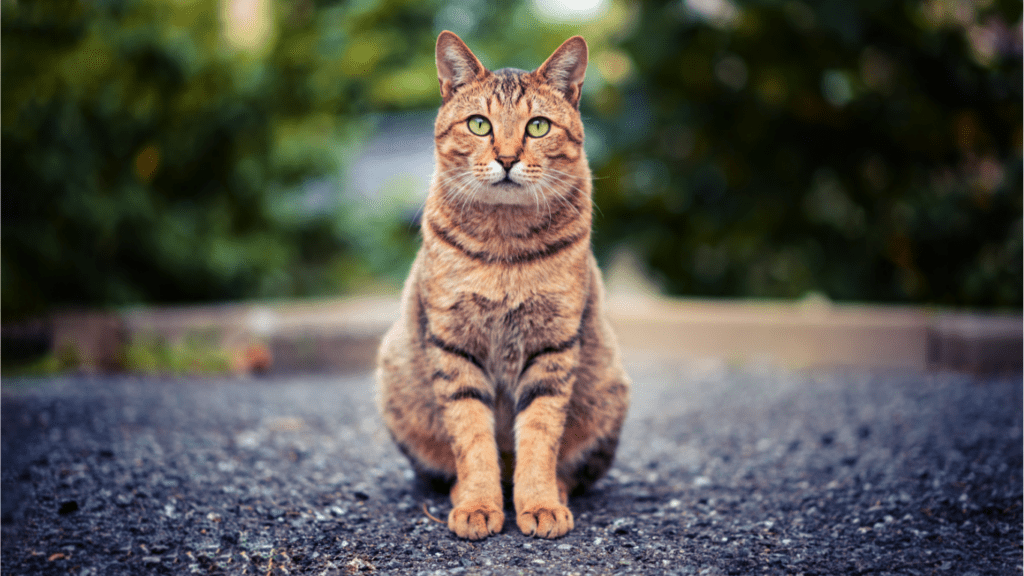Understanding Cat Behavior
Understanding cat behavior is essential in training. Knowing how your cat thinks and acts makes it easier to teach good manners.
Common Misconceptions
Many believe cats can’t be trained. This myth persists because cats seem independent. In reality, cats respond well to training when methods suit their nature. Another misconception is that cats behave out of spite. Cats often misbehave due to unmet needs, such as lack of stimulation. Cats scratching furniture or refusing the litter box may signal underlying issues.
Basic Instincts
Cats have instincts shaped by their wild ancestors. Hunting is their primary instinct. They stalk, pounce, and capture even if domesticated. Providing interactive toys can satisfy this urge. Cats are territorial animals. They mark their areas by scratching and rubbing scent glands. Understanding territorial behavior helps prevent unwanted marking. Cats also have a strong need for security. Consistent routines and safe environments reduce anxiety.
Understanding these behaviors aids in effective training. By aligning with their instincts, training becomes less challenging and more effective.
Essential Training Tools
Specific tools can simplify training. Here, I discuss the essentials to train cats effectively.
Treats and Rewards
Treats incentivize cats during training. Small, tasty treats work best. Use high-value treats such as pieces of chicken or commercial cat treats. Reward cats immediately after desired behavior to reinforce positive actions. Over time, reduce the frequency of treats and use verbal praise, like “good kitty”, to maintain the behavior without creating dependency on treats.
Clickers and Toys
Clickers provide a consistent marker for good behavior. A click sound indicates to cats that they’ve performed the desired action and a reward is coming. This technique, known as clicker training, creates a clear communication channel.
Toys engage cats during training and keep them mentally stimulated. Laser pointers, feather wands, and interactive toys attract cats’ attention and encourage them to perform specific actions. Use toys to direct their energy and teach behaviors like sitting, jumping, or coming when called.
Basic Commands and Tricks

Teaching cats basic commands and tricks enhances their behavior and bonds them closer to their humans. Here, you’ll learn essential commands to make your feline friend more responsive.
Sit and Stay
Instructing cats to “sit” and “stay” improves discipline. Start with a treat in hand, holding it above the cat’s head. When the cat sits, give the treat. Repeat until the command is associated with the action. For “stay,” once the cat sits, say “stay” and move back a few steps. If the cat remains seated, reward it. Gradually increase the distance to reinforce the command.
Come When Called
Getting a cat to “come” when called is crucial for safety. Use treats and a specific call, like tapping the food bowl or using a distinct sound. When the cat approaches, reward it immediately. Practice this command daily in different areas of the home to ensure the cat responds consistently in various environments.
Addressing Behavioral Issues
Even with training, some common behavioral issues can arise. It’s crucial to understand the root causes and address them effectively.
Scratching Furniture
Cats instinctively scratch to mark their territory and keep their claws sharp.
- Redirecting this behavior is key to saving your furniture.
- Place scratching posts near the areas where your cat tends to scratch.
- Ensure these posts are stable and covered in materials like sisal to attract your cat.
If your cat continues scratching furniture, use a deterrent spray designed for cats, which is safe and effective.
Excessive Meowing
Excessive meowing can indicate various needs or issues, such as hunger, thirst, or seeking attention. First, ensure all basic needs are met: fresh water, food, and a clean litter box. If these are in place, engage your cat with interactive toys to provide mental stimulation and reduce boredom. Sometimes, medical issues trigger excessive meowing; consult a vet if the behavior persists to rule out health problems.
Maintaining a consistent routine and using positive reinforcement helps mitigate these behavioral issues. Addressing the underlying causes ensures a well-behaved and content feline friend.
Socialization Techniques
When training cats, socialization plays a significant role in shaping their behavior and interactions. Proper socialization helps cats adapt to new environments, people, and other animals.
Introducing New Pets
Introduce new pets gradually to ensure a smooth transition. Place the new pet in a separate room initially, allowing the cats to smell each other’s scents through a door. Swap bedding between pets to familiarize them with each other’s scents. After a few days, let them meet under supervision using a pet gate or a carrier to prevent direct contact. Gradually increase their interaction time once they show signs of comfort, like relaxed postures and calm behavior.
Handling Visitors
Acclimate cats to visitors by creating positive associations. Before guests arrive, offer your cat a special treat or toy they enjoy. Allow your cat to approach visitors at their own pace rather than forcing interaction. Encourage guests to remain calm and avoid sudden movements. If the cat shows interest, let guests offer treats or engage in gentle play with a toy. If the cat seems anxious, provide a safe space where they can retreat without disturbances.
Positive Reinforcement Strategies
Training cats effectively relies on positive reinforcement. These strategies create a positive learning environment, encouraging your feline friend to adopt good manners and behaviors.
Consistency and Patience
Consistency ensures that cats understand which behaviors are rewarded. I always use the same commands and rewards during training sessions to avoid confusing my cat. Patience is crucial, particularly because cats might take longer to learn certain behaviors. I break down training sessions into short, daily intervals to keep my cat engaged and willing to learn. Over time, regular practice builds familiarity and trust, leading to lasting results.
Avoiding Punishment
Punishment creates fear and disrupts the bond between owner and cat.
- Using negative reinforcement, like scolding or physical correction, often leads to stress and anxiety in cats.
- Instead, I focus on rewarding desirable behaviors to encourage repetition.
- For instance, if my cat stops scratching furniture and uses a scratching post, I immediately provide a treat or affection.
- This approach teaches my cat that good behavior results in positive outcomes, making training a more pleasant experience for both of us.


 Founder & Pet Wellness Advocate
As the visionary founder of Pet Paw Shack, Kimberliene Sabinin is passionate about helping pet owners provide the best care possible for their furry companions. With a background in veterinary science and animal nutrition, Kimberliene brings years of experience in promoting pet health, safety, and well-being. Her mission is to empower pet owners with practical knowledge about proper nutrition, behavior training, and overall pet wellness.
Founder & Pet Wellness Advocate
As the visionary founder of Pet Paw Shack, Kimberliene Sabinin is passionate about helping pet owners provide the best care possible for their furry companions. With a background in veterinary science and animal nutrition, Kimberliene brings years of experience in promoting pet health, safety, and well-being. Her mission is to empower pet owners with practical knowledge about proper nutrition, behavior training, and overall pet wellness.
